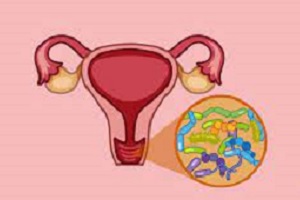By Setareh Kiumarsi
These days, the buzz around intermittent fasting is everywhere. Everyone is talking about its benefits, excited to try it, and eager to witness miracles from it.
So, how about we spend a little time with Mr. Fasting, get to know his strengths and challenges, and see who he’s good for—and who he doesn’t quite agree with?
What is intermittent fasting?
Intermittent fasting means you divide your day into two time periods: one for eating, and one for fasting. The length of each can vary in different models.
In the most popular model, the eating window is about 8 hours—starting around 10 a.m. and ending around 6 p.m. This usually includes two or at most three meals: breakfast around 10–11 a.m., and lunch-dinner combined around 5–6 p.m.
What about the fasting window? That lasts for about 16 hours, during which nothing enters the digestive tract.
What’s the goal?
To reduce frequent snacking and allow the digestive system to rest and do its job better.
From an Ayurvedic Perspective: Who is intermittent fasting good for?
For people with solid, heavy bodies, those who have more muscle and fat, who are stocky or overweight.
People in whom the water and earth elements (i.e., Kapha dosha) are dominant or imbalanced, like individuals with excess weight, hypothyroidism, or water retention.
Ayurveda recommends a diet for these individuals that aligns closely with intermittent fasting: only two main meals in a 24-hour period, and avoiding morning and afternoon snacks.
Who is intermittent fasting not suitable for?
People with light, thin frames, bony bodies, and little moisture in the body—those filled with air and space elements, full of dryness. In Ayurvedic terms, people with Vata as a dominant or imbalanced dosha.
Think of someone who constantly experiences bloating, intestinal gas, constipation, and dryness in their joints, skin, and hair.
Ayurveda suggests the opposite of fasting for these people: frequent small meals throughout the day, including breakfast, a mid-morning snack, lunch, an afternoon snack, and dinner.
Why? Because their bodies lack substance, they’re like a balloon full of air. If they go too long without food, air and space build up even more, causing all kinds of physical and mental imbalances.
The Challenges of Intermittent Fasting
As mentioned, in the popular model of intermittent fasting, people eat during an 8-hour window (10 a.m. to 6 p.m.) and fast for the remaining 16 hours.
Usually, breakfast is around 10–11 a.m., and lunch-dinner is combined around 5–6 p.m.
From an Ayurvedic perspective, this timing is not ideal. Why?
Because the heaviest meal of the day is being consumed in the late afternoon.
Ayurveda connects digestive power (Agni) with the sun’s position in the sky. As the sun reaches its peak (around noon), our digestive fire is at its strongest—ready to digest even the heaviest foods.
From 10 a.m. to 2 p.m. is the peak activity time for Pitta dosha, which governs digestion. Your stomach is ready to digest anything—even rocks!
But as the sun begins to set, from 2 to 6 p.m., Vata gains dominance, and from 6 to 10 p.m., it’s Kapha’s turn.
This means cold replaces warmth, fire weakens, and digestion slows dramatically.
You’ve probably noticed how eating the same food in the evening feels much heavier than eating it at noon? It’s like placing a pot of raw ingredients on a stove that’s turned off.
So, the first major flaw of popular intermittent fasting schedules is placing the main, heavy meal at the wrong time.
What else?
Let’s say you used to snack all day long. Then suddenly, you switch to only two meals, without any real food until late in the day.
What happens? All that physical and emotional hunger piles up. By the time 5 p.m. hits, you turn into a starving beast who needs three plates of food to feel full.
In other words, although your meal frequency drops to just two, you end up overeating so much that your body spends all 16 hours of fasting struggling to digest your last meal, leaving no room for detox.
, we got an introduction to intermittent fasting, learned who it’s suitable for, who should avoid it, and what problems it can create.
So today, let’s dive into the details of an Ayurvedic-style intermittent fasting plan.
Morning Routine (Around 6 AM)
Wake up around 6 a.m. and, on an empty stomach, drink a glass of warm water + a few drops of lemon juice + a pinch of salt + one teaspoon of honey.
(If you have high blood pressure, use pink Himalayan salt instead.)
If your bowels usually don’t work well and you suffer from constipation, use this alternative detox drink:
The night before, in half a glass of boiling water, soak 2 teaspoons of teffseeds + 1 teaspoon fleawort + 1 teaspoon psyllium + 2 teaspoons rosewater + 1–2 dried apricots
Let it sit overnight. In the morning, add another half glass of hot water + a few drops of lemon juice + 1 teaspoon honey + a pinch of salt + 2 teaspoons sweet almond oil
Drink it all on an empty stomach.
You can also take ½ teaspoon triphala powder (or black haritaki) mixed with 1 teaspoon honey as a paste and swallow it. If the taste bothers you, you can take two medium-sized triphala capsules instead. (If your constipation is severe, increase the dose up to 1.5 teaspoons.)
________________________________________
Between 7–8 AM: Detox Smoothie
To help your digestive tract detox, have a light, fat-burning vegetable smoothie instead of a heavy breakfast like bread, eggs, or jam.
Blend 1 carrot + 1 small cucumber (with its peel) + A handful of parsley (or basil or spinach) + 1 cup warm water + 1–2 teaspoons lemon juice + 2–3 teaspoons honey + 1–2 pinches of salt
Blend well and drink instead of breakfast.
Mid-Morning: Digestive Tea
Still a few hours until noon! Let’s help detox a bit more with a lovely little hero: digestive tea.
This tea is anti-bloating, detoxifying, aids digestion, and burns fat.
Mix the following whole herbs (not powdered) in a jar using equal measures (e.g., one tablespoon) Fennel seeds (1) + Cumin seeds (1) + Green cardamom pods (1) + Dried rose petals (½) + Coriander seeds (½)
Each time, use one teaspoon of the blend per cup of boiling water. Let it steep.
You can also add a few drops of lemon juice, one teaspoon honey, and a pinch of salt.
Drink one cup every hour throughout the day.
Main Meal: Lunch (Between 11 AM – 12 PM)
As explained in the previous article, digestive fire (Agni) is strongest at this time of day, so this is when you should eat your main meal.
Typical lunch plates are often too heavy: a big portion of meat or fish, some sauce, a big piece of bread, and even dessert right after. That’s a heavy, hard-to-digest combination.
Follow these guidelines to support digestion:
• 30% of your plate: Rice (4–5 tbsp max) or bread (max size of your palm). Rice should be rinsed (drained) and cooked with spices. Use whole-grain, multi-grain, or gluten-free bread.
• 20% of your plate: Protein (half your palm). For example, ⅓ of a chicken breast or 2–3 pieces of stew meat.
If vegetarian: a stew with a small piece of cheese, 2 tbsp yogurt, or 10 soaked almonds/pistachios.
• 50% of your plate: Fiber-rich vegetables like digestive salad, fresh herbs (parsley, basil), or steamed/sautéed vegetables.
If using fresh herbs, season with lemon juice, olive oil, salt, and thyme.
For cooked vegetables: maintain a 3:1 ratio of warm to cool vegetables.
(Warm: carrot, leek, beet, bell pepper, parsley, basil, etc. / Cool: zucchini, okra, celery, cilantro, mung sprouts, etc.)
Drink a glass of digestive lassi with your meal to aid digestion.
Avoid overeating. Cup your hands together—that’s your stomach size. Your whole meal (main dish, salad, sides) should fit into a regular-sized plate.
Eat slowly. Use a small spoon, chew thoroughly, and don’t gulp.
Post-Lunch
From two hours after lunch, drink one cup of digestive tea every hour.
Light Dinner (Between 5–6 PM)
Avoid rice, stews, or bread in this meal. Your Agni is weakest now, so instead, support detox with light, fibrous vegetables.
Choose one of the following light dinners:
• One glass carrot juice
• One glass of the detox smoothie (recipe above)
• One grated carrot + a handful of chopped basil + 2 pinches cardamom + 1 pinch rose petals + 1–2 tsp honey
• One bowl of stewed apple
• A fruit salad or 1–2 pieces of fruit (e.g., one persimmon or mandarin + one sweet lime) or a bowl of stewed apple
• A bowl of digestive salad.
o Vegetarians: add nuts (10 soaked almonds, 10 pistachios, or 1 tbsp pumpkin/sunflower seeds) and 2 tbsp cooked quinoa.
o Non-vegetarians: add some animal protein (e.g., chicken, turkey, or a boiled egg).
Drink with a glass of digestive lassi.
• One bowl vegetable soup or ash (herb-based Persian stew).
o 50–70% should be vegetables (3:1 warm to cool veggie ratio).
o 30–50% should be protein and a light grain (quinoa, oats, buckwheat, bulgur, or rice).
Before Bed
Have a glass of digestive lassi before sleep.
If you feel good with this detox plan, you can follow it 2–3 times per week.
Wishing you abundant health.
Please be sure to credit the author, Setareh Kiumarsi, when sharing or republishing this article, which was written with love and the hope of well-being for all.







